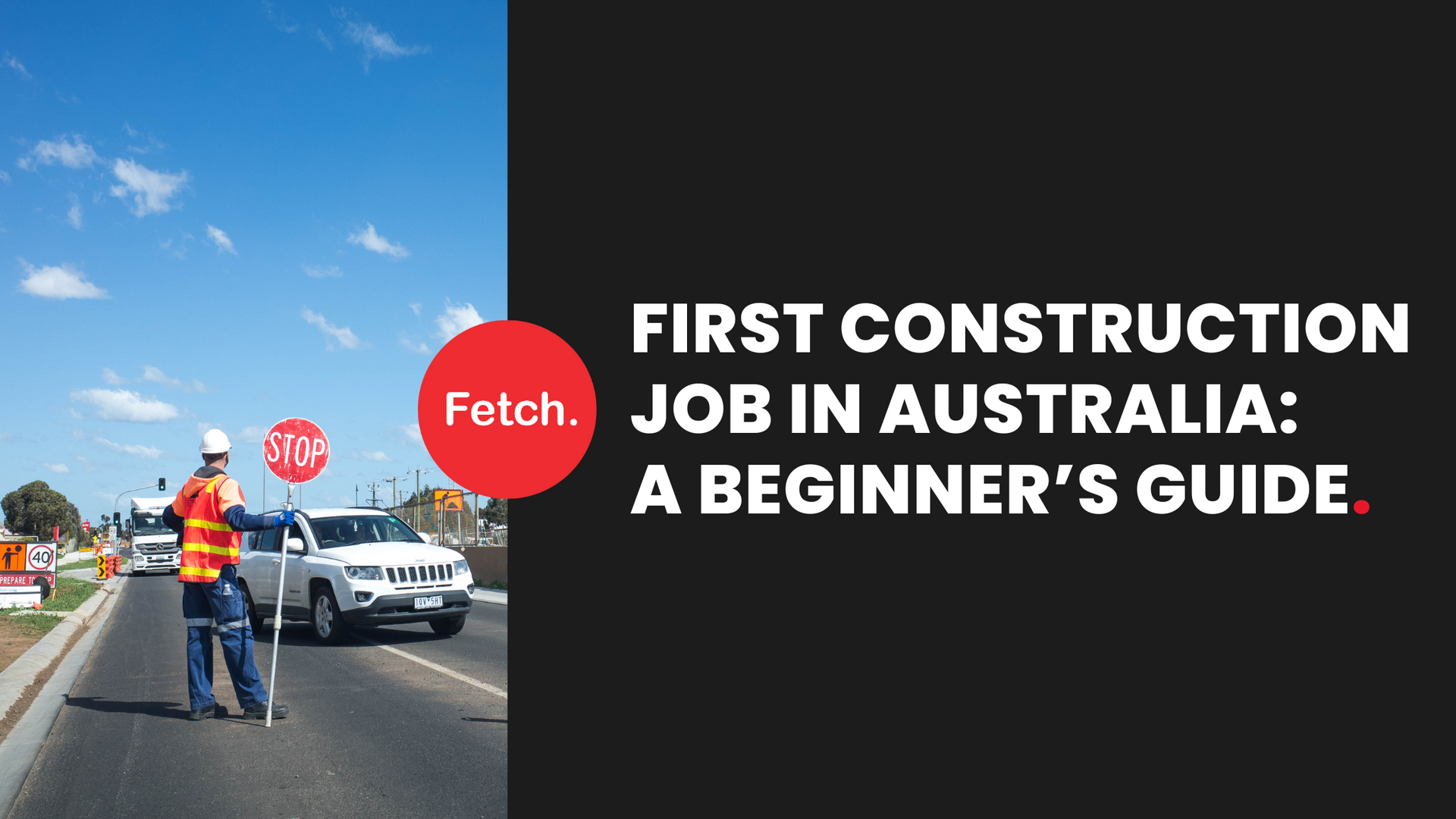
Share This Article
First Construction Job in Australia:
A Beginner’s Guide.
Construction is one of Australia’s most in-demand and accessible industries. With projects underway across residential, commercial, and infrastructure sectors, there are plenty of opportunities for people with the right attitude—even if you’re just starting out.
Whether you're a school leaver, career changer, someone on a temporary visa, or a backpacker on a 417 visa, this guide will help you take the first steps toward your first construction job in Australia.
Step 1: Know What Entry-Level Construction Jobs Are Available
You don’t need years of experience to begin a construction career. Many employers are actively hiring entry-level workers and offering on-the-job training.
Common entry-level construction jobs include:
- General Labourer – assisting tradespeople, site clean-up, material handling
- Traffic Controller – ensuring safety and managing vehicle flow on construction sites
- Formworker – building concrete formwork for foundations and structures
- Scaffolder – erecting and dismantling scaffolding for safe access on site
- Forklift Operator – moving materials around the site with a forklift (requires forklift ticket)
- Labourer (Civil, Landscaping, or Mining) – supporting specialised trades with manual tasks
- Apprentice (Carpenter, Plumber, Electrician, etc.) – earn while you learn through formal training
- Concreter – preparing and pouring concrete for footpaths, slabs, and other structures
Demand for these roles is strong across all states, especially in New South Wales, Victoria, Queensland, and Western Australia.
For temporary visa holders and those on 417 Working Holiday Visas, contract or casual work is often the most accessible way into the industry. Many construction employers offer short-term contracts, which suit the flexibility of temporary visa conditions.
Step 2: Understand Training Options and Certification Requirements
Before starting work on a construction site in Australia, you will need the appropriate certifications and tickets, including the mandatory Construction Induction Card (commonly called a White Card).
Training requirements and pathways can vary by state and territory. To help you navigate your options, check out the other pages on our website which explain training pathways, certification requirements, and how to get your training paid for in each state:
- Training Options for Victoria
- Training Options for Queensland
- Training Options for Western Australia
- Training Options for South Australia
Many employers also support workers by paying for or reimbursing training and additional tickets such as Traffic Management, Working at Heights, Forklift Licences, and Elevated Work Platforms (EWP).
Step 3: Create a Simple, Targeted Construction Resume
Even if you have no construction experience, a well-written resume can help you stand out.
Focus on transferable skills such as:
- Reliability and punctuality
- Willingness to learn and follow instructions
- Physical fitness and stamina
- Safety awareness
- Teamwork and communication
Include any casual work, volunteering, or school activities that show commitment and responsibility.
Keep your resume formatting simple and easy to read: use clear headings, bullet points, and avoid overly complex fonts or graphics. A straightforward resume helps employers quickly see why you’re a great fit, especially when they receive many applications.
Step 4: Apply Through Trusted Job Channels and Focus on Contract Roles
Not all construction jobs are advertised in the same place. Here’s where to look:
- Recruitment agencies specialising in construction – they often have direct access to unlisted roles and contract opportunities
- Job boards – Seek, Indeed, Workforce Australia, and Jora
- Company career pages – especially Tier 1 and Tier 2 construction firms
- Social media platforms – LinkedIn and Facebook jobs groups can offer local leads
- Word of mouth – speak to people already working in the industry
If you’re on a temporary visa or a 417 Working Holiday Visa, prioritising contract and casual roles can be a smart strategy. These roles are often easier to obtain without permanent residency and provide flexibility.
Working with a construction recruiter is often the fastest and most reliable way to get hired, especially if you’re starting from scratch.
Step 5: Start Building Your Construction Career
Many people begin as labourers or apprentices and progress to roles like Site Supervisor, Leading Hand, Project Coordinator, or even Construction Manager.
Construction is a long-term career path with plenty of room for growth, especially in an industry facing ongoing skill shortages across Australia.
Step 6: Be Reliable and Build Your Reputation on the Job
Once you’ve secured a contract or permanent role, maintaining your reputation is key to long-term success.
- Show up on time every day — punctuality is critical in construction
- Avoid no-shows or last-minute cancellations
- Follow safety procedures and site rules
- Communicate clearly with supervisors and team members
- Demonstrate a strong work ethic and willingness to learn
Reliability and professionalism can open doors to future roles, contract extensions, and promotions. In an industry where trust is everything, being dependable makes you stand out.
Final Thoughts
Getting your first job in construction doesn’t have to be complicated. Whether you’re an Australian resident, a temporary visa holder, or working on a 417 visa, with the right certifications, a strong attitude, and support from the right people, you can step into a stable, well-paid industry with long-term potential.
If you’re ready to start your construction career, our team can help connect you with entry-level and contract roles across Australia. Get in touch today to find out more.


